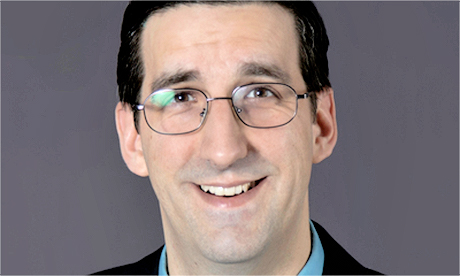On Holy Saturday, The New York Times published an article by Nicholas Kristof with the provocative title “God and Her (Female) Clergy”.
The article focuses on the increasing numbers of women entering the clergy, particularly in Christian denominations, claiming a “right” they had previously been denied.
More than that, the article claimed that a further consequence of this shift: an increase in perception of a feminine vision of God.
Dr. Serene Jones, first female president of the Union Theological Seminary, was quoted as saying: “We’re seeing a new day of understanding of who God is,” Dr. Jones added.
“When the people who are representing God, making God present, have female bodies, that inevitably changes the way you think about how God is.”
She predicts this shift “will powerfully reshape Americans’ understanding of God from stern father to more of a maternal healer and nurturer.”
Set aside for a moment some of the articles more tendentious claims. (Are fathers not nurturing? Can mother’s not be stern? Is Christ not routinely portrayed as a healer?)
Though it mentions in passing a few times that the Catholic Church is “behind” in this movement because it only ordains men, the arguments of Dr. Jones only help to confirm the Church’s teaching—because the Church agrees with her argument, but says that her premise is wrong.
There can be no doubt that the characteristics of God’s representatives have always affected people’s perceptions of God, for good and ill.
Holy priests and ministers have long inspired people, and immoral clergy have been a perennial stumbling block to the faith of the laity—“How can I believe in God if this is the best He can give us?”
But this argument gets at something deeper, that the most fundamental aspects of a person can be representative of God.
Proponents of female clergy often argue, as Dr. Jones does above, that women are needed in ministerial roles in order to bring out an aspect of God that is absent in the symbolism of a male cleric.
Of course, God in His essence is neither male or female, neither essentially masculine or feminine.
However, God, in His relation to His creation, does have a masculine aspect.
This is clear in the way God has revealed Himself, and is fundamental to the Church’s understanding of the priesthood.
The priest represents God who reveals Himself as “Father” (Scripture never uses a female pronoun to refer to God).
The priest acts in the person of Jesus Christ, God Incarnate, who became human as a man.
The liturgy is our participation in the Wedding Feast of the Lamb to His Bride the Church, with the priest representing the Bridegroom.
For all these reasons, in order to be a fitting sign of God, the priest must be a man.
And since the Sacrament of Holy Orders is one sacrament with three orders within it, the same applies to all three orders.
The priest not only represents God ex officio, by virtue of his appointment as a minister.
In the Sacrament of Holy Orders, the priest is conformed to the character of Christ the priest at the very level of his being—an ontological change, leaving an indelible mark.
The priest is made permanently into a living symbol of God. Thus, who he is matters.
Curiously, then, both sides agree that the minister provides a “sign value” for God and communicates to us something of who God is.
It is just who God is, and how God relates to us, that is the point of disagreement.
While those who favor women as ministers often speak of terms in equality and fairness, we see, especially in the Catholic context, that those who agitate for women’s ordination often have further agenda items.
Very often proponents of female ordination discuss the issue not only in terms like equality, but also “representation,” in a political sense, that women need to be represented in “decision-making.”
Dig deeper, and you find that they want women to become clergy in order to change other teachings.
Those who say women ought to be ordained as Catholic priests are saying that the Church’s teaching on the Sacrament of Holy Orders is wrong, and we should not be surprised when we find that this is not the only area in which they believe the Church has erred.
Female ordination advocates also routinely promote abortion, contraception, same-sex relationships, and any other of a number of the “usual suspects” of dissenters.
They do not simply want to serve the Church; they want to change the Church.
Two ironies suggest themselves.
First, the proponents of female clergy often vociferously denounce clericalism, yet their position implies that the clergy are the “real Christians,” or the important ones—that one cannot participate meaningfully in the Church unless one is ordained.
They see ordination as a form of power than a call to service.
It is the error of Simon Magus, dressed up in new clothes.
Second, the idea of female clergy and “the feminine divine” are being lauded precisely at the same moment in which we are being told that gender is fluid and a construct and both essentially meaningless and deeply meaningful to one’s identity.
What does it mean to be a female priest when we no longer seem certain what it means to be female?
- Nicholas Senz is is Director of Children’s and Adult Faith Formation at St. Vincent de Paul Catholic Church in Arlington, TX. He holds Master’s degrees in philosophy and theology from the Dominican School of Philosophy and Theology in Berkeley, CA.
- First published in Catholic World Report. Reprinted with permission.
